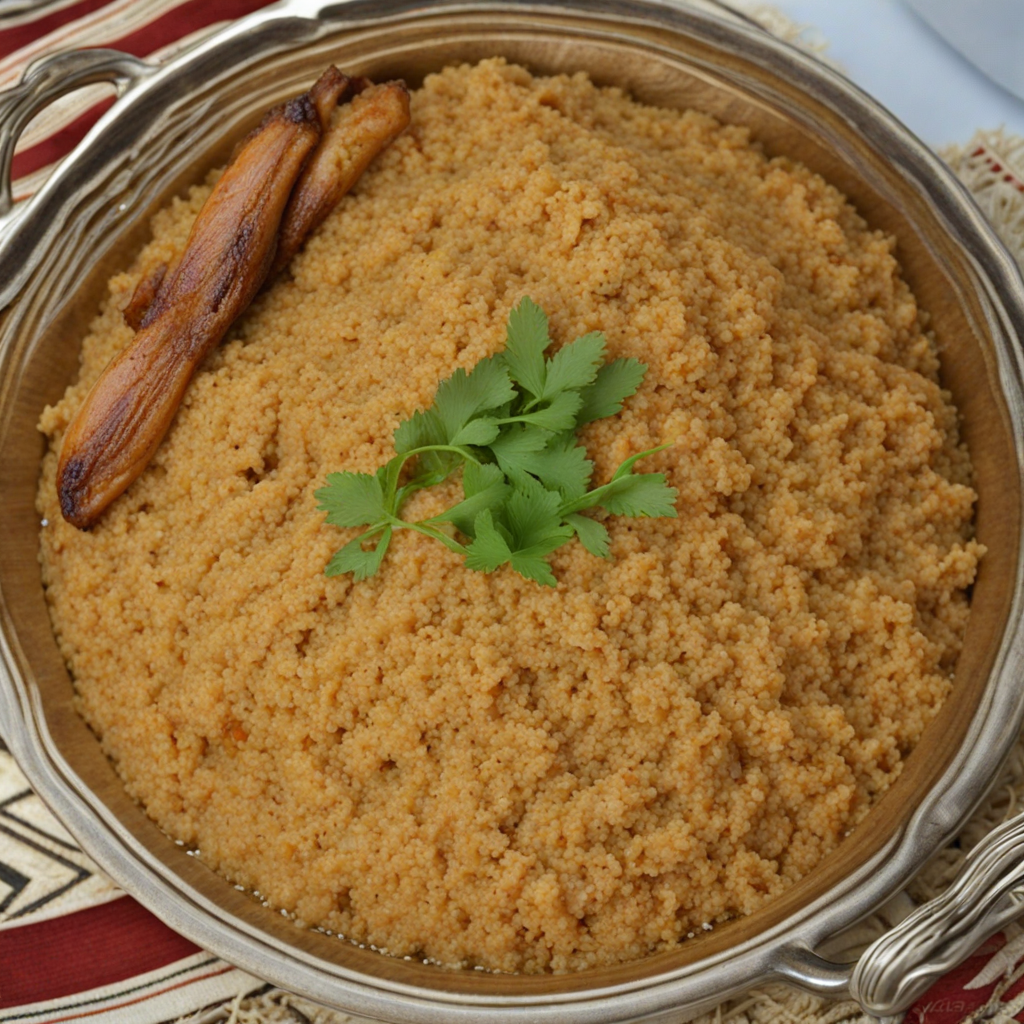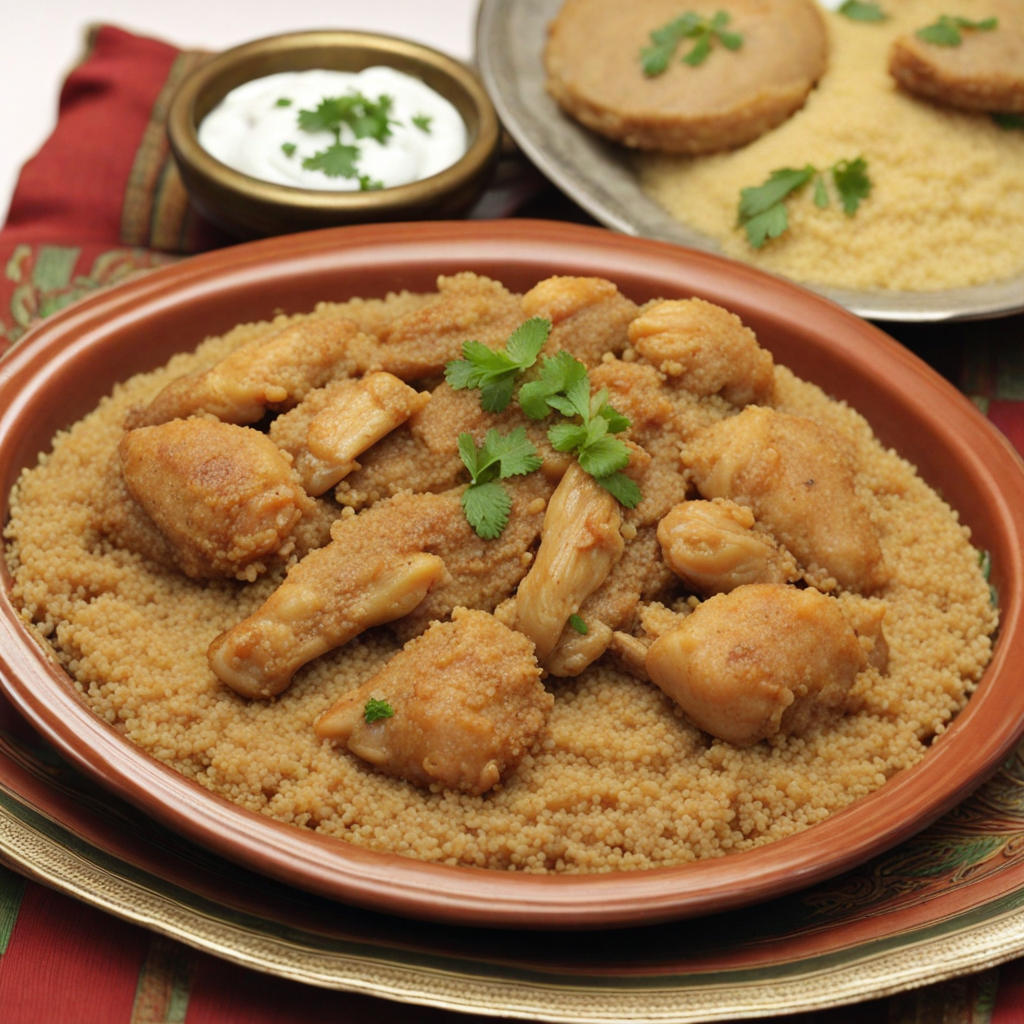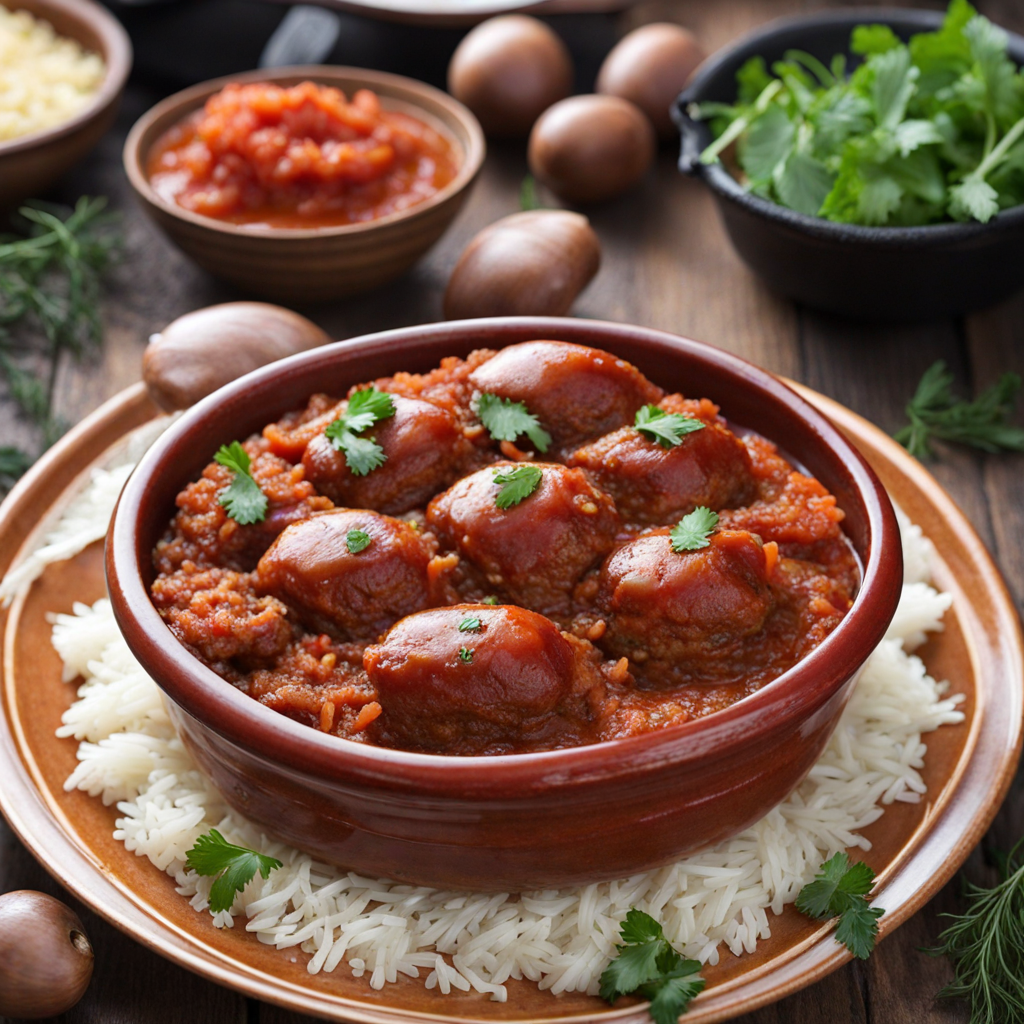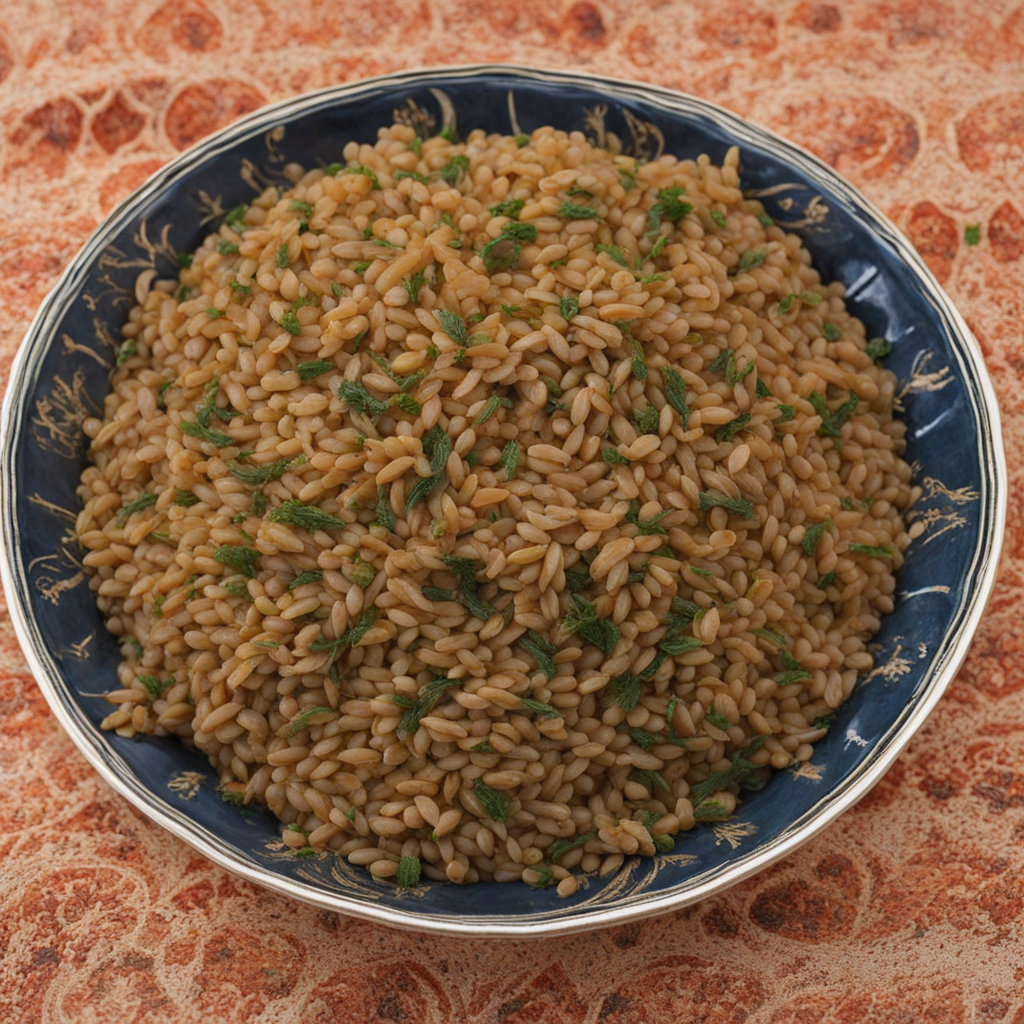Jarish
Jarish is a traditional Libyan dish that showcases the rich culinary heritage of the North African region. At its core, Jarish is a hearty porridge made from finely ground barley or wheat, often flavored with a blend of spices that reflect the vibrant tastes of Libyan cuisine. The dish is typically cooked until it reaches a creamy consistency, offering a comforting and nourishing meal that can be enjoyed at any time of day. The use of local grains not only provides a unique texture but also highlights the importance of agriculture in Libyan culture. What sets Jarish apart is its versatility; it can be served plain or topped with a variety of accompaniments. Common toppings include a drizzle of olive oil, a sprinkle of fresh herbs, or even sautéed vegetables for added flavor and nutrition. Some variations also incorporate meat, such as lamb or chicken, which is slow-cooked with spices to infuse the porridge with deep flavors. This adaptability allows for personalization, ensuring that every bowl of Jarish can be a unique culinary experience tailored to individual tastes. In addition to its taste and texture, Jarish holds cultural significance in Libya, often being prepared for family gatherings and special occasions. The communal aspect of sharing a large pot of porridge encourages togetherness and celebration, making it more than just a meal. For those seeking to discover a new taste, Jarish offers an invitation to explore the essence of Libyan cuisine, with its comforting warmth and rich flavors that echo the traditions of the land.
How It Became This Dish
An Engaging History of جريش (Jreesh) from Libya Origins of جريش (Jreesh) Jreesh, a traditional dish from Libya, is more than just a meal; it is a symbol of the country's rich cultural heritage and history. The dish is made primarily from crushed or coarsely ground wheat and is often cooked with meat, spices, and sometimes legumes. Its origins can be traced back to the Berber tribes of North Africa, who have been cultivating grains for millennia. The use of wheat in Libyan cuisine reflects the agricultural practices of the region, influenced by the Mediterranean climate that allows for the flourishing of various grains. Historically, Jreesh is thought to have been consumed as far back as antiquity, evolving from simple grain porridges eaten by early civilizations. Evidence suggests that the Berbers, as well as the Romans and Byzantines who occupied parts of North Africa, utilized similar grain-based dishes. With the arrival of Islam in the 7th century, new culinary practices and ingredients were introduced, further shaping the evolution of Jreesh. Cultural Significance Jreesh holds a special place in Libyan culture, often associated with communal gatherings, celebrations, and significant life events. Traditionally, it is prepared during weddings, Ramadan, and Eid celebrations, serving as a dish that brings families and communities together. The preparation of Jreesh is often a communal activity, with family members gathering to cook, share stories, and bond over the meal. This reinforces the importance of family ties and community cohesion in Libyan society. In a cultural context, Jreesh is often viewed as a comfort food, evoking nostalgia and memories of home. For many Libyans, it is not merely about nourishment but also a link to their ancestry and traditions. The preparation and consumption of Jreesh are steeped in rituals, often accompanied by prayers and blessings, especially during religious celebrations. Development Over Time As Libya's history progressed, so did the preparation and ingredients of Jreesh. In the early 20th century, the dish began to incorporate different flavors and cooking techniques, influenced by neighboring cultures and the trade routes that passed through Libya. The introduction of spices such as cumin, coriander, and cinnamon enriched the flavor profile, making Jreesh a more complex and aromatic dish. In urban areas, the dish began to evolve further with the influx of Italian and Ottoman influences during their respective occupations. Italian cuisine introduced new ingredients such as tomatoes and olive oil, which found their way into various Libyan dishes, including Jreesh. The Ottomans, on the other hand, contributed to the refinement of cooking techniques and the use of aromatic spices, enhancing the dish’s appeal. Post-independence in the 1950s, Libya experienced significant social and economic changes that influenced its culinary landscape. Urban migration and globalization brought about a fusion of culinary traditions, allowing for new interpretations of traditional dishes like Jreesh. Contemporary chefs have begun to experiment with the dish, incorporating modern cooking methods and ingredients while still respecting its traditional roots. Jreesh in the Modern Era In the modern era, Jreesh continues to be a staple in Libyan households, often served on special occasions but also enjoyed as a comforting everyday meal. The resurgence of interest in traditional and regional cuisines has led to a renewed appreciation for Jreesh, with many younger generations seeking to connect with their culinary heritage. This has resulted in a revival of interest in traditional cooking methods, with families passing down recipes and techniques to ensure that their culinary history is not lost. Moreover, the rise of social media and food blogging has played a significant role in popularizing Jreesh beyond Libya's borders. Recipes and cooking demonstrations are shared online, allowing individuals from various backgrounds to learn about and appreciate this unique dish. This digital exposure has also fostered a greater understanding of Libyan culture and cuisine in the global food community. Conclusion Jreesh is a dish that encapsulates the essence of Libyan identity, reflecting its historical roots, cultural significance, and evolution over time. From its ancient origins among the Berber tribes to its place in modern Libyan society, Jreesh remains a testament to the resilience and adaptability of culinary traditions. As Libyans continue to celebrate and innovate their culinary heritage, Jreesh stands as a beloved symbol of home, family, and cultural pride. In an ever-globalizing world, the importance of preserving traditional foods like Jreesh cannot be overstated. They serve as vital links to our past and are essential for maintaining cultural diversity. As Libyans share their love for Jreesh with the world, they not only keep their culinary traditions alive but also invite others to partake in the rich tapestry of Libyan culture.
You may like
Discover local flavors from Libya







